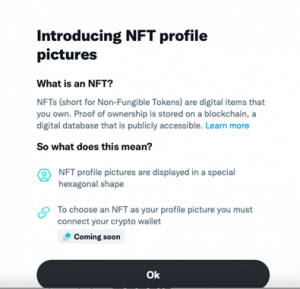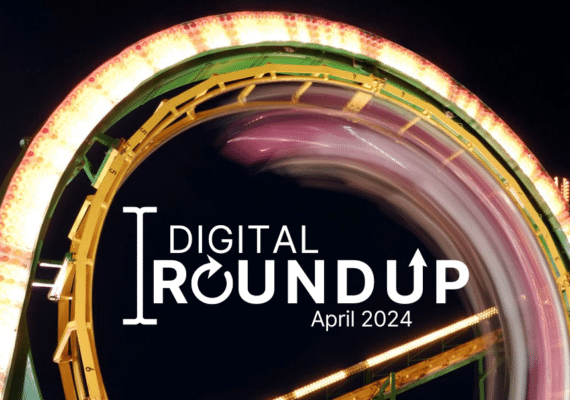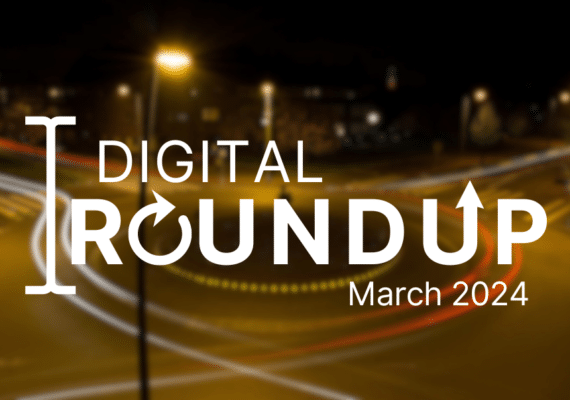We have officially started the new year with a bang! After a rather slow December, we have seen many new updates and features being announced or rolled out in January.
Read the digital updates below to see what might be coming your way in 2022:
Contents
TikTok Experimenting With Paid Subscriptions
It has been reported that popular video sharing social platform TikTok is experimenting with paid subscriptions. If introduced, this would allow creators to charge a subscription fee for their content. Paid subscriptions are currently only part of a limited test, so there is not much information available yet on how this may work.
TikTok are remaining tight-lipped, choosing only to respond “We’re always thinking about new ways to bring value to our community and enrich the TikTok experience,” when questioned by tech journalists, but it is fair to assume that most content creators will still offer some videos for free so they don’t limit discovery of their channel on the ‘For You’ page.
This is not TikTok’s first experiment in allowing creators to monetise their content. Gifting is already supported in TikTok LIVE streams and the platform has recently confirmed that they are testing an in-app tipping feature that allows creators to accept money from fans outside of LIVE streams.
We have also heard a similar story about Instagram, which is currently running tests in the US, allowing a small group of content creators to offer paid access to exclusive Live videos and stories. Twitter also launched a paid subscription service in September 2001, which allowed users to subscribe to their favourite accounts for a monthly fee.
It remains to be seen whether the social media subscription trend will take off, but it does seem to be fairer than the YouTube advertising model. With subscriptions, fans can pay their favourite channels directly and creators can earn directly from their content. On YouTube a relatively small number of creators make a lot of money but most creators are not able to successfully monetise their platforms.
Google Search Console Has New Desktop Reports
Anyone who is responsible for a website will most likely be aware of Google Search Console. This is an extremely useful tool that helps webmasters optimise their content and page experience, and monitor and troubleshoot the way their site appears in Google Search results.
As the internet is increasingly being browsed on mobile devices, many of Google’s newer tools have tended towards helping evaluate a website’s mobile experience. While this is useful to many people, not everyone’s website is mobile-first. B2B companies generally still get a majority of their website traffic from desktop computers.
Google has recently updated its Page Experience and Core Web Vitals reports so that mobile and desktop page experiences are now evaluated separately. Many of the metrics used to evaluate desktop experience are similar to those used for mobile experience, but this update is nevertheless great news for businesses who get most of their traffic from desktops.
As Google is rolling out an update to their Page Experience algorithm starting in February and finishing at the end of March, now is a great time to head over to Search Console and see how your website measures up in these new reports.
Meta Plans to Establish an NFT Marketplace
Non-fungible tokens or NFTs have seemingly come from nowhere to dominate tech news. Whether it is a story about the original meme photos such as ‘Disaster Girl’ selling for $500,000, or about Twitter launching verification for NFTs used profile pictures, the stories seem to be everywhere.
For those who are not familiar with NFTs, anything digital, such as images, videos or music can be an NFT. Although these files can be easily copied and shared, the person who owns the NFT owns the work itself. Many people can buy copies of a painting, but only one person owns the original.
Facebook and Instagram parent company Meta has seen an opportunity to facilitate the transfer of NFTs and is shifting its platforms accordingly. Teams at Facebook and Instagram are preparing a feature that will allow their users to display NFTs on their profiles and are working on a prototype that would allow users to create and mint NFTs themselves. Sources also say that discussions are also taking place within Meta about a marketplace where users can buy and sell NFTs.
The early interest in (and high cost of) NFTs is probably similar to the dot-com bubble, where values quickly became overinflated. However, as with tech stocks, this is likely to settle down and there could be a genuine value and utility in an online marketplace. This is especially exciting for digital creators who may have the opportunity to generate revenue from their digital works in the same way that creators of physical art can.
LinkedIn’s Report About Company Culture Trends for 2022
LinkedIn has released a report about what is being deemed “The Great Reshuffle”; as employees push for more emphasis on workplace well-being, and companies are responding by developing cultures that can thrive. The main areas of focus are on staff wellbeing, flexibility around time and location, and diversity and inclusion. Within the digital realm, there has been a 73% increase in companies posting about well-being and a 67% engagement boost to posts that mention workplace culture. The future for business is an empathetic, human-focused approach that prioritises attracting, retaining, and growing great talent. A trend that highlights how together companies and individuals can flourish and succeed in both work and life as a whole.
Meta to Build a Foundation of Transparency for the Future of Virtual Influencers
The ever-expanding metaverse continues to see a rise in Virtual Influencers (VIs), with one of the largest creators, Lil Miquela, having over 3 million subscribers on Instagram. Meta has acknowledged the benefits of VIs and their capacity for fundraising and championing social causes but is also conscious of the dangers that could arise if virtual influencing was used to manipulate and mislead followers. They are developing an ‘ethical framework’ to combat some of these issues and raise awareness of the negative possibilities if honesty and transparency are not established as a foundation. It will be interesting to see how the evolution of virtual reality impacts both the online and offline spheres in the future.
Google’s New ‘People Search Next’ Feature
Google has recently launched a new mobile search feature called ‘People Search Next’ which is pretty self-explanatory.
When someone does a “near me” search on mobile, they will now get to see what people that have searched for similar phrases in the past have searched next. It’s an addition to the already existing features like ‘People also search for’ or ‘Related searches’.
What this feature actually does is to think about searches that would be helpful to do after a certain search has been done. For example if you searched for ‘dentist near me’, under the People search next section you’d see searches around procedures a dentist would perform like ‘how painful is getting a cavity filled’ or ‘what does a root canal procedure entail?’.
Google has also said that this feature would be rolled out to more types of searches and won’t be limited to ‘near me’ searches in the future.
This already sounds like a feature most of us would make use of at one point, but for marketing professionals, this might be even more useful. This will be another way to do content research. By looking at what people searched next, you can decide what should come next in your content calendar.
Google Proposes New ‘Topics’ Approach to Replace Cookie Tracking
As part of its continuous effort to remove third-party cookie tracking, and replace it with a new, privacy-friendly data insights process for advertisers, Google has announced a new topic-based structure to protect user privacy.
As elaborated by Google:
“With Topics, your browser determines a handful of topics, like “Fitness” or “Travel & Transportation,” that fall under your top interests for that week based on your browsing history. Topics will be kept for only three weeks. Topics will be selected entirely on your device without involving any external servers, including Google servers. When you visit a participating site, Topics picks just three areas, one from each of the past three weeks, to share with the site and its advertising partners.”
So instead of providing more specific insight on user behaviours and interests, Google would enable advertisers and publishers to utilize topics for tracking, protecting user information while also catering to third-party data needs.
TikTok Launches ‘Instant Pages’ Ad Display Option to Improve Promotions
To maximize business engagement and boost its revenue opportunities, TikTok is rolling out a new ‘Instant Page’ shopping display option. The update will enable brands to link their TikTok ads through to a lightweight, native landing page, built within TikTok itself, which will load up faster than standard mobile pages.
As explained by TikTok: “Within an Instant Page, users can browse videos and images, swipe through carousels, or explore another destination – all without leaving the TikTok app. Instant Pages are easy to build and customize for your brand.”
Once you’ve created an Instant Page, you can save it to your TikTok ad library, so you can add it to multiple campaigns. To set up a TikTok Instant Page, brands will need to create an eligible ad on TikTok Ads Manager and then create an Instant Page as the destination link for the campaign.
Twitter Launches NFT Profile Picture Verification
Ready to show off your NFT? Twitter now allows you to connect your crypto wallet and display your NFT PFPs!
Twitter becomes one of the first social networks to build NFTs into the app itself. You can link your Ethereum wallet to your Twitter account, and you’ll be presented with a list of NFTs you own (available only for Ethereum-based NFTs, at the moment, but may go on to support other blockchains as well).
Choose an NFT, and your profile picture – typically enclosed within a circle – will get a nifty new hexagonal border. For now, NFT verification is available only for users with Twitter Blue, the company’s $2.99-a-month subscription service.
TikTok Tactics Gives Marketers a New Training Course on the Platform
Marketers looking to gain insights on best practices for promoting and developing their brand on TikTok need look no further. The new TikTok Tactics course focuses on four elements that aim to help users make the most of advertising on the platform.
What is interesting about TikTok’s approach is the way they have ‘gamified’ the learning process, allowing users to progress through bite-sized video levels that increase in complexity and have greater reliance on TikTok’s inbuilt tools.
While Tactics lacks the complexity of training provided by some of the more mature platforms, it is definitely a useful resource for marketers looking to broaden their skills and discover useful tips.
Instagram Will Be the Key Focus for Many Marketers in 2022
In a survey on LinkedIn and Twitter, Social Media Today asked their followers which platform their marketing efforts would be focused on in 2022. After accounting for platform biases (a survey will disproportionally favour the platform on which it is held), they have concluded that Instagram is the overall leader for marketing focus. Given the popularity of Facebook and TikTok, this may seem
TikTok appears to be the rising star in social media these days. It’s never far from the headlines (there are even three stories about TikTok in this month’s digital roundup). Fashion, Art and Beauty companies are doing particularly well on TikTok, however it is not suited to every industry.
Facebook still has the largest number of active users across the widest range of demographics but as it has been the subject of several scandals, it doesn’t have the shine it once had. The cost of advertising on the platform has risen too over the last few years, so there is most likely a financial element to these decisions too.
Instagram seems to walk a nice line between TikTok and Facebook, it still appeals to the younger markets in a way that Facebook no longer does but it still allows marketers to reach a broader audience than TikTok and is seen as the more mature platform by many.







